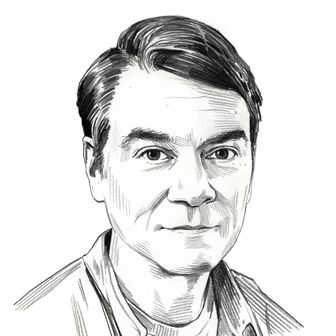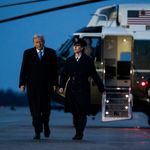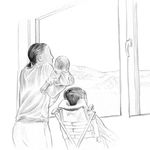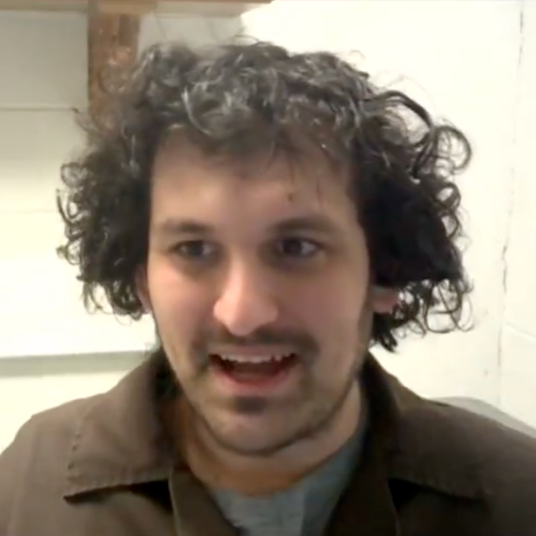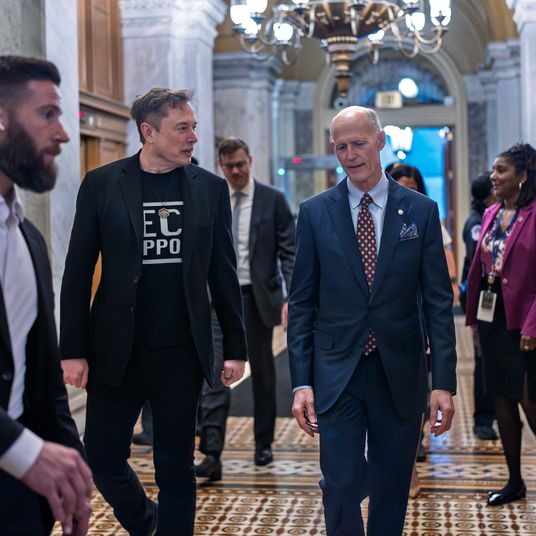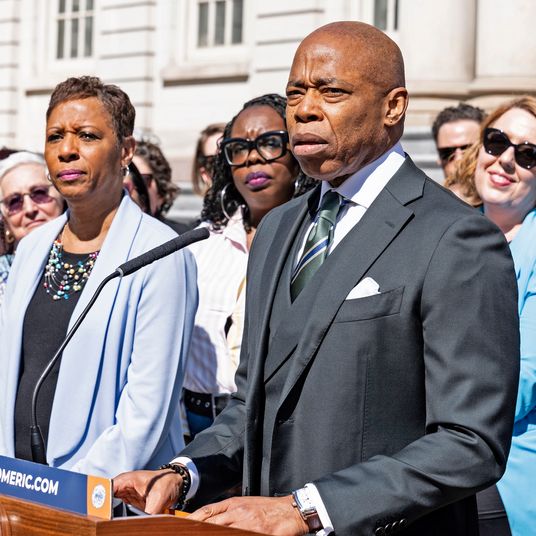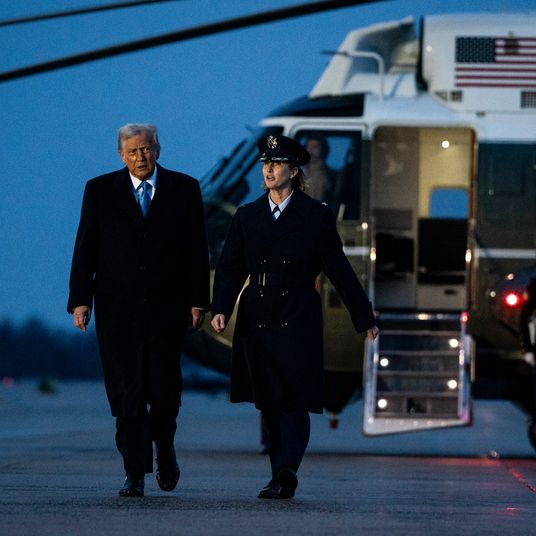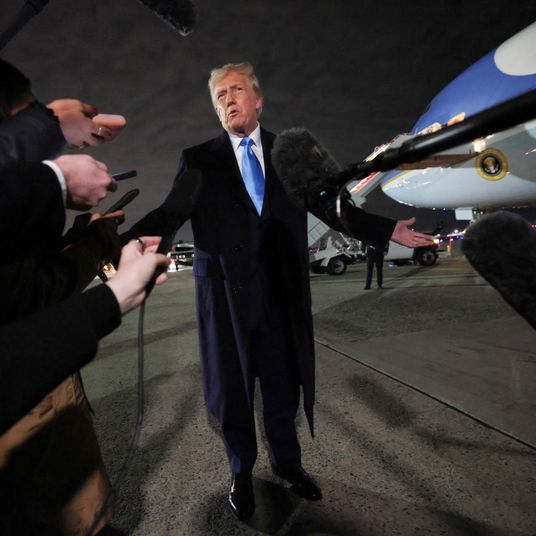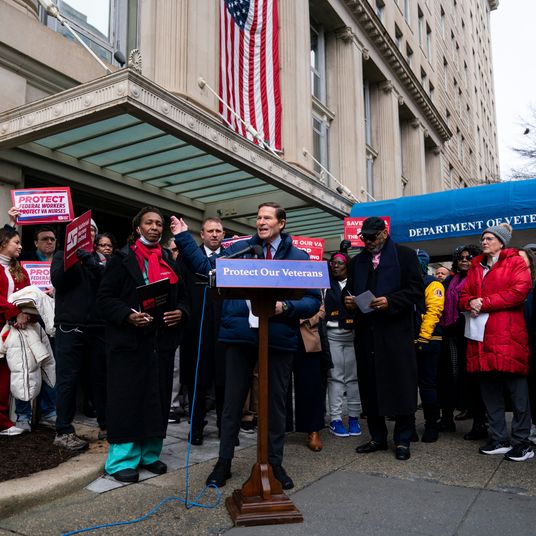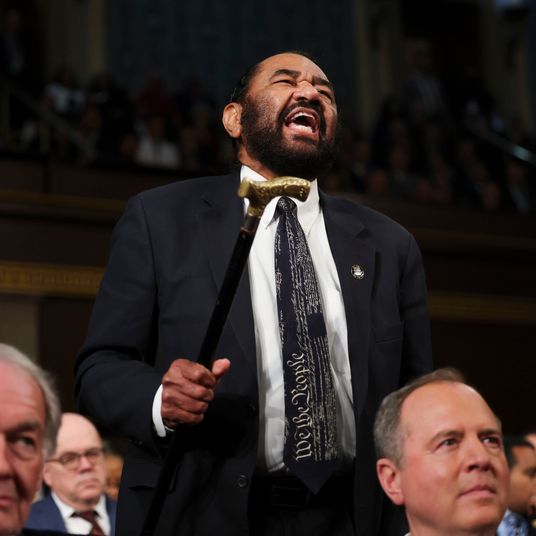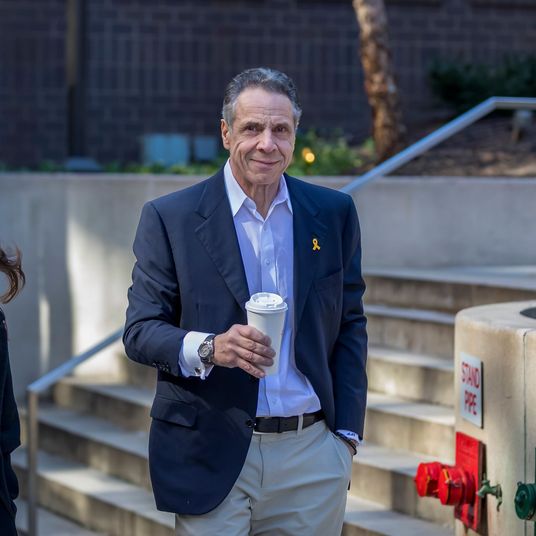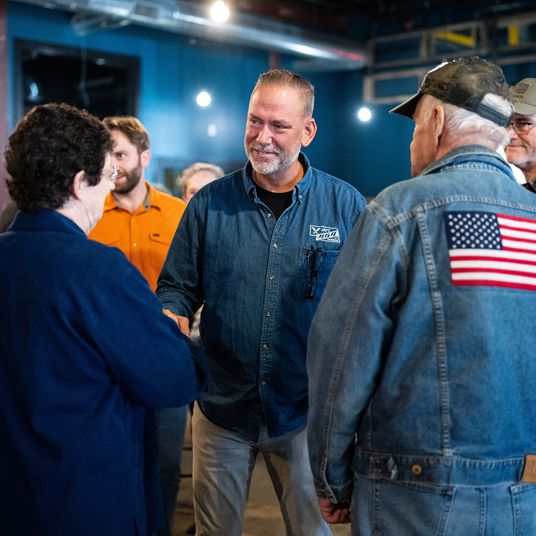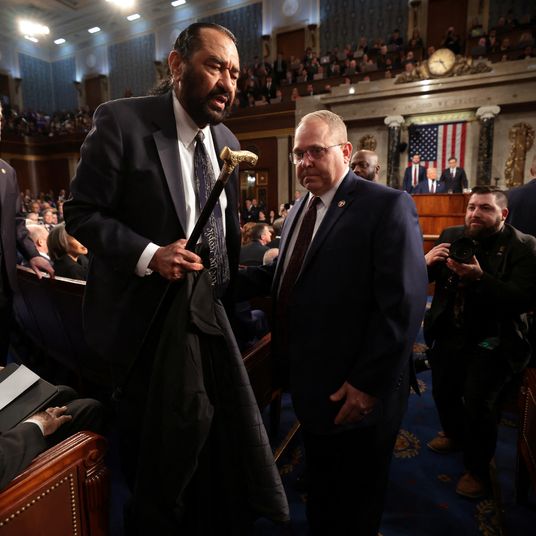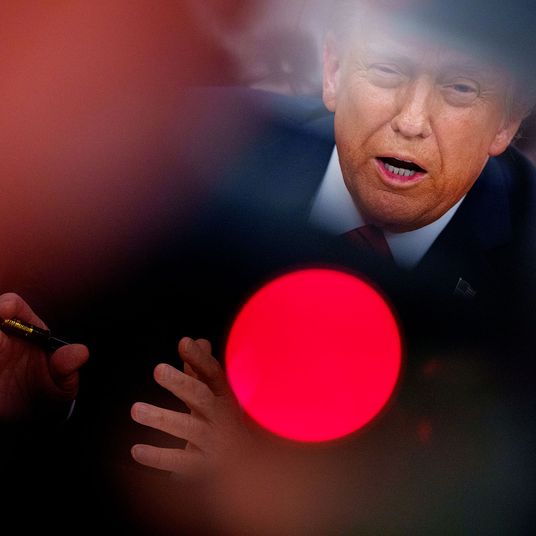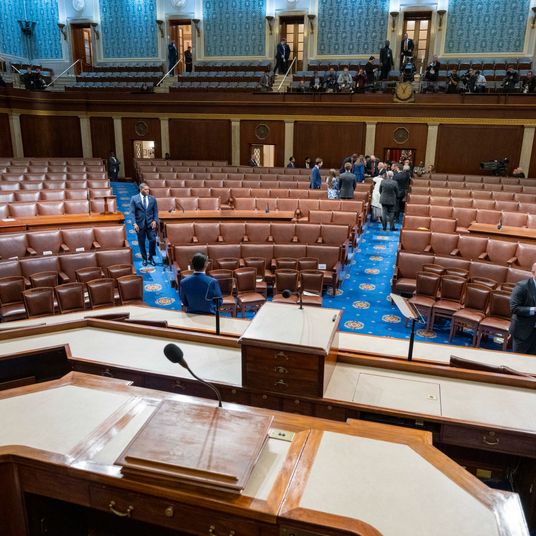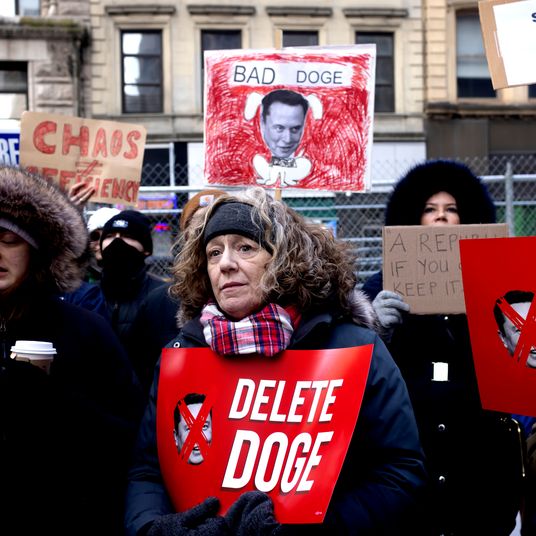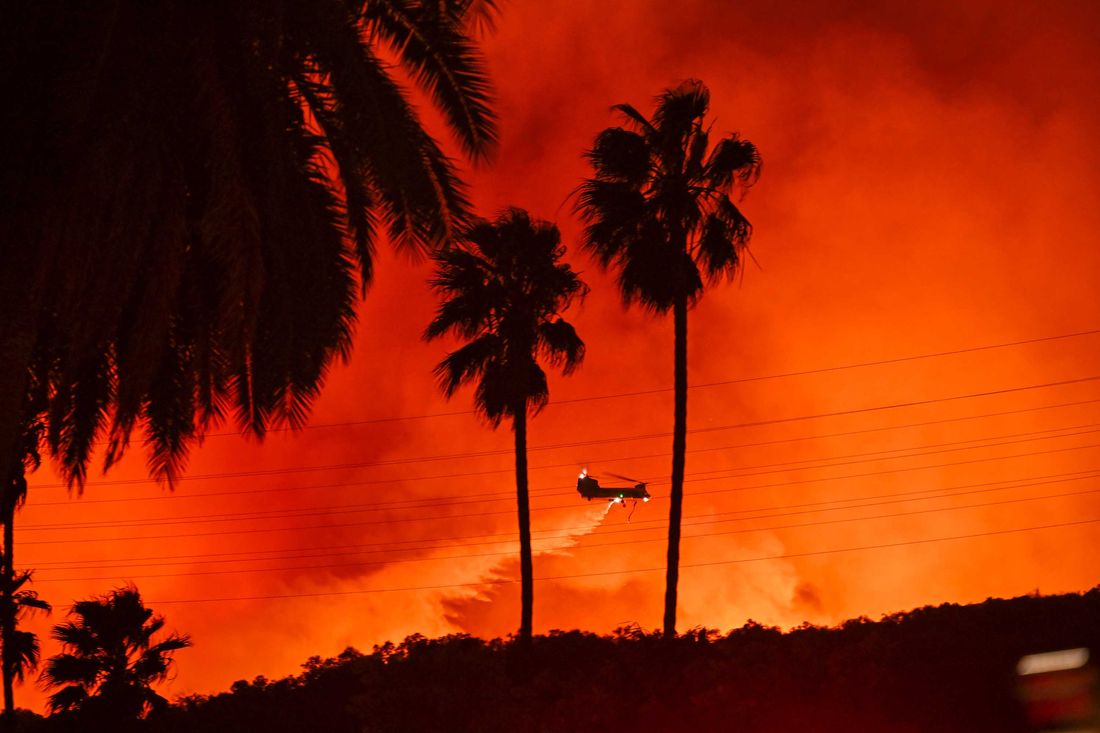
Tanker 47 rears up as helicopter pilot Darren Davies settles it to hover over the Encino Reservoir, a half-mile-wide artificial lake perched on the shoulder of a hill overlooking the San Fernando Valley. He holds steady a dozen feet over the water as the flight mechanic in back, John Trivellin, lowers a 23-foot-long retractable snorkel into the reservoir.
“Tanker 47, we’re in the dip,” co-pilot Pablo Montero calls over the radio.
It’s 9.30 p.m. on Saturday, January 11, and the crew is on its third night working the Palisades fire, a Godzilla of a blaze that has already scorched more than 20,000 acres, killed five people, and annihilated more than 5,000 homes and other structures. The fire is less than 15 percent contained. (Nearly a week later, it is only 21 percent contained.)
Davies’s infrared goggles turn the night into day, rendering the sprawling lights of the Valley below like a galaxy. In front sits a yellow rubber duck, a sort of mascot, jiggling atop the control panel from the vibrations of two massive sets of triple-rotor blades whirling overhead, each weighing 360 pounds. Radio frequencies for different fires are scrawled in black Sharpie on the inside of the windscreen in front of Montero, who handles most communications.
The Chinook is a beast, a 99-foot-long, 25-ton machine originally designed for humping troops and weapons around the battlefield, now repurposed for a different kind of war. It’s more than twice as big as the Black Hawk, its most famous cousin, and twice as long as a semi trailer when counting its 60-foot rotors. Inside Tanker 47’s cargo bay sits a 3,000-gallon tank, roughly equivalent to six hot tubs. While it’s not a vast amount in absolute terms, a helicopter can drop the water precisely, and all at once, which can halt the advance of even a large fire.
Within seconds, Davies can feel the aircraft grow heavier as the snorkel drinks from the reservoir and he throttles up the twin 5,000-horsepower turbine engines to compensate. In less than two minutes, the helicopter has taken on ten tons of water.
“Clear to retract,” Trivellin calls.
Montero flips a switch, and the snorkel tucks back up into the fuselage. Davies adds more power, and they climb, sluggish under the weight of their load.
“Tanker 47 coming out of the dip,” Montero calls.
Davies turns to the south and begins to climb. Ahead, the ridgeline is silhouetted by a glowing orange sky. The Palisade fire stretches across ten miles of mountains and coastline, from burned-out Malibu in the west to the 405 freeway in the east, where the fire’s most menacing advance is taking place: Tonight, it’s the front line in the battle for L.A. In its path lie billions of dollars worth of property, priceless art, and the lives of tens of thousands of people — but Davies isn’t really thinking about that. “The nice thing about night firefighting is we don’t have to experience all the destruction out there,” he says. “We’re working in our areas, and we can only see so far. We go out there to do our job, and we don’t have to experience what the guys in the daytime have to see.”
Tanker 47 is part of a group of three Chinooks operated by Coulson Aviation called the Quick Reaction Force, on standby at all times to respond immediately to any wildfire. Funded by Southern California Edison, the electricity company whose transmission lines are notorious for triggering wildfires, the QRF covers 15 counties from the Mexican border to the Central Valley. Coulson started out as a logging company in British Columbia in the 1960s and has grown to become the most prominent private aerial-firefighting company in the world, with a fleet of dozens of airplanes and helicopters primarily deployed in the Americas and Australia.
Davies, 54, joined Coulson six years ago after flying these big machines in all kinds of situations: slinging seismic equipment for the oil industry, pulling logs out of the forest for timber companies, and shuttling people and cargo between U.S. bases in Afghanistan, where, he says, “it was always hot.”
To hear Davies tell it, he’s not the only pilot flying this fire who would rank nighttime water-bombing a raging wildfire as one of the more sedate jobs he’s taken. “We all have that personality,” he says. “Everybody needs a little bit of jolt in their life. Some people do drugs or drink or chase women, but we like our flying.”
As the largest type of helicopter outfitted for firefighting work, the Chinook plays an outsize role in the tool kit of wildland firefighters. It’s not as big or as fast as VLATs (very large air tankers), which are converted DC-10’s and 747’s that can carry the equivalent of a small swimming pool’s worth of water and are best known lately for dumping red retardant on neighborhoods. It’s not even as big as LATs (large air tankers), like the converted 737’s or Hercules C-130 transports that can carry 4,000 gallons. The Chinook’s smaller size gives it a critical advantage: It can get in low to place its load accurately, and it can reload its tanks close to the fire site, meaning it can cycle through its drops a lot more quickly than an airplane that has to return to an airport to reload.
On balance, these characteristics make the Chinook well suited to the goal of the QRF, which is to stop a wildfire early by dumping decisive amounts of water before it can grow out of control. That strategy didn’t work in the case of the Palisades fire, which was whipped into existence by the hurricane-force Santa Ana winds that made flying such missions impossible. The air rushing over the mountaintops swirls and gyres, creating windshear that can toss even a massive Chinook like a rag doll. “We’re all a little bit of thrill seekers, but it’s not great getting tossed around,” Davies says. “It’s not worth breaking the aircraft, and it’s not worth putting your life at risk.”
Coulson’s pilots have learned the risks of pushing their luck the hard way. Two years ago, a Coulson 737 lost partial engine power during a retardant drop in Western Australia and crashed. Both flight crew members were able to crawl from the wreckage with only light injuries. A C-130 crew was less fortunate. After a drop in New South Wales in 2020, they became disoriented amid heavy smoke and turbulence and banked into the ground. All three people onboard were killed.
Battles are won, but the war is never over. Southern California wants to burn, over and over again. Five years ago, when Coulson flew its first season of nighttime firefighting here, the crews fought to save Pacific Palisades and the Getty Center. “And now we’re back,” says Mel Ceccanti, director of flight operations for Coulson’s rotorcraft division. Within a year, the brush grew back, he says. New kindling for the fires to come.
Davies leaves his hotel in Orange County and stops to get something to eat before starting his 5 p.m. shift at Chino Airport, on the other side of Los Angeles from the Palisades fire. This is the QRF’s year-round base, and members of the flight crew work 12 days on, 12 days off, returning to their homes when not on duty. Montero, his co-pilot, flew in the Bolivian Air Force before becoming an American citizen; Trivellin is a former U.S. Army flight engineer from Virginia. In the early part of a regular evening, while they’re waiting for the call to come in from dispatch, they will study the aircraft’s technical manuals. “It’s a pretty big aircraft, lots of systems going on in it,” Davies says. “We try to get a couple hours of studying in every night.”
Tonight they don’t have time for that. As soon as they arrive, their supervisor at Coulson asks them to reposition Tanker 47 up to Van Nuys, 50 miles to the west, close to the fire. Davies and his crew take off, cross the patchwork grid of Alhambra and Glendale and Burbank, and land at 7 p.m. Soon after their arrival, L.A. County Fire Dispatch orders them to go directly to the Encino Reservoir, fill up, and proceed to a section of the fire called Division Alpha, or Div Alpha for short. It’s the big show, the center of the fight against the line of fire creeping eastward toward the billionaire enclave of Bel Air and the Getty Center, with its vast trove of priceless art, including Vincent van Gogh’s Irises.
After filling up at and climbing out of the reservoir, the flight crew’s main point of contact is the Helco, or helicopter coordinator, hovering overhead. Supervising the action is no simple feat. Along with Tanker 47, six other choppers are working this section of the fire, shuttling between the reservoir and the drop zone. “You’re always either right directly behind someone,” Davies says, “or right directly in front of somebody.”
Firefighters refer to a wildfire by its anatomy. The main axis of advance, where the greatest volume of fire is concentrated, is called the head. The heel is the point of origin, the place that the fire came from. The sides are called the flanks, with the shoulders being the part of the flanks closest to the head. Tonight, Davies and his crew are working the right shoulder, in Mandeville Canyon, just west of the 405.
As Davies reaches the top of the ridge, he picks up the clean woodsmoke aroma of a campfire. This fire is burning with the intensity of a furnace, and even in the air above it, the crew are not safe. They are dressed in flame-resistant gear — heavy boots, jumpsuits, and gloves — in case they suffer a mechanical problem and are forced to land in the burn zone.
Other dangers are closer, such as drones like the one that collided with a waterbomber over the Palisades fire two days earlier, tearing a hole in its wing and forcing it to land. Another hazard is other aircraft. This week’s wildfires have drawn resources from so many jurisdictions: Cal Fire, L.A. County, the U.S. Forest Service, the National Guard, the U.S. Navy, numerous private companies, and several provinces of Canada. Davies can’t keep track of who’s from where.
A decade ago, firefighters hardly flew at night — it was too dangerous. But after Australia’s disastrous “Black Saturday” fires in 2009, Coulson decided it needed to figure out how to make it work. Firefighting at night, its executives reasoned, would give them an edge on tough fires because winds are generally weaker and humidity higher, and consequently, fires burn with less force. After years of research and millions in new equipment, it began nighttime firefighting in Australia in 2016 and in California in 2020. Other operators have followed their lead, and now the nighttime skies over the Palisades are crowded as an impromptu relay team runs its laps over the front line, taking turns between bombing runs and refills. The radio becomes a chatterbox of aircraft constantly calling out their locations.
As Tanker 47 slides down from the ridgeline toward the fire, hot embers floating upward look like stars in Davies’s night-vision goggles. In the infrared, heat shows up as light, the main body of the fire itself so bright that it overwhelms the sensors — so much so that Davies can’t look directly into the eye of the beast. Lining up for the drop requires careful consideration of the terrain. The classic widowmaker in mountain flying is the box canyon, a valley with a rising slope ahead of you, so steep that you don’t have enough power to climb straight out and too narrow to turn around in. (Kobe Bryant’s helicopter crashed while trying to turn in a canyon ten miles west of here five years ago.) As a rule, Davies aims to fly the drop in the downhill direction so the terrain opens up below him as he goes. Right now, that won’t work because the fire is on the far side of a ridge; to hit it, he’d have to release his load before he had the flames in sight, meaning that he would likely not hit it at all. Instead, he plans to swoop around and come up into it the other way, uphill.
As he maneuvers the aircraft, Davies constantly turns his head, scanning his night-vision goggles back and forth, looking for obstructions on the left side while Montero is doing the same thing on the right. Radio towers and power lines can easily snag low-flying aircraft. On this particular drop, there is a transmission line just off to the side of the fire. Making sure they’ve got it in sight is a priority, so Trivellin comes forward from the rear and stands behind the pilots’ seats to help them with the visual scan. “I have the wires,” he reports.
Davies levels off the Chinook and heads in for the bombing run, bearing in at 70 mph, about 200 vertical feet over the fire.
“Four-seven’s on the drop,” Montero calls out over the radio.
Military pilots have sophisticated bombsights that allow them to place their munitions with centimeter accuracy, but Davies just eyeballs it, gauging the windage and the lay of the land, and intuiting the moment of release from years of experience. On the first run at a fire, before a pilot has experienced the current local conditions, his chance of hitting it right on target is about 85 percent; after that, he’ll nail it pretty much every time.
As they draw closer, Montero hovers his hand over the water tank’s emergency-release button. There’s always the possibility that the regular release system could get jammed, meaning that the aircraft can’t free itself of 20,000 pounds and climb away from the terrain after the drop as quickly as the pilot might have been expecting. In a box canyon, that malfunction could be deadly. The emergency release will purge the whole tank and let them escape — if he can trigger it quickly enough.
Now they’re almost on top of the fire, a mass of brilliant orange that fills the windscreen. Through the glass, Davies can feel the heat on his face. It’s time. He presses a button on the control stick in his left hand, and ten tons of water come sliding out the bottom of the helicopter in four seconds. Right away, like a bowler who senses that he’s thrown a strike before the ball is halfway down the alley, Davies knows it’s a good drop.
“Four-seven’s off the drop,” Montero calls.
Davies throttles back on the power as they swoop toward the reservoir again.
Back and forth Tanker 47 flies, laying another load of reservoir water on top of the fire with each cycle. The longer they fly, the less kerosene they have in their fuel tanks and the more weight in water they can take up. As they work further south, the odor changes from the nice campfire smell to something fouler — burning rubber, plastic, the materials that make up a home. They’ve moved from a forest to the outskirts of a burning community.
After six or eight passes, the situation at Div Alpha has improved enough that the firefighters on the ground can hold back the fire without help from above. Tanker 47 is dispatched to another area, Div Zulu, on the fire’s left shoulder in the hills farther to the west. There, a hand crew with about 40 men is positioned along a ridge, trying to lay hose to fight the fire, but it’s getting too hot, so the Helco sends in waterbombers to cool things off. Davies’s mission is to lay down a line of water near where the crews have set up, and then lay down successive drops working progressively downward toward the fire. The men wear patches on their turnout coats that light up in the Chinook’s spotlight and Helco can also indicate their position with a laser pointer. Tons of water landing all at once can crush a vehicle as easily as a person.
After six hours, Tanker 47’s shift is done. The plan is to fly back to Van Nuys to refuel before heading home to base in Chino, but they only make it five miles before their supervisor texts them that the wind is blowing too strong to land safely in Chino. Davies doubles back to Van Nuys, where he turns over the Chinook to the day-shift crew.
The fire is more contained than when he started, and tomorrow will be better still, at least when it comes to the Palisades fire. The Eaton fire north of the city is burning strong, and much else of the southland is bone dry and ready to ignite. Strong Santa Ana winds are forecast to blow farther south. “Riverside, San Bernardino County, Orange County, those are going to take the brunt of the winds that are coming in,” he says.
From Van Nuys, it’s an hour’s drive in a company vehicle back to his midrange business hotel. The staff there have Googled Coulson and figured out what Davies does for a living. “There’s a couple of them there that say, ‘Hey, we know what you guys are doing,’ and they give us a bit of a pat on the back,” he says, feeling wrung out. “I don’t want to sit up and talk to anybody.”
When I ask if he’s heard that there are people all over social media stanning the wildfire pilots, he says he hasn’t and that he’s not interested in public recognition. “I’m a head-down, ass-up, middle-of-the-herd kind of guy,” he says. Right now, all he wants to do is eat, shower — and, most of all, sleep.


